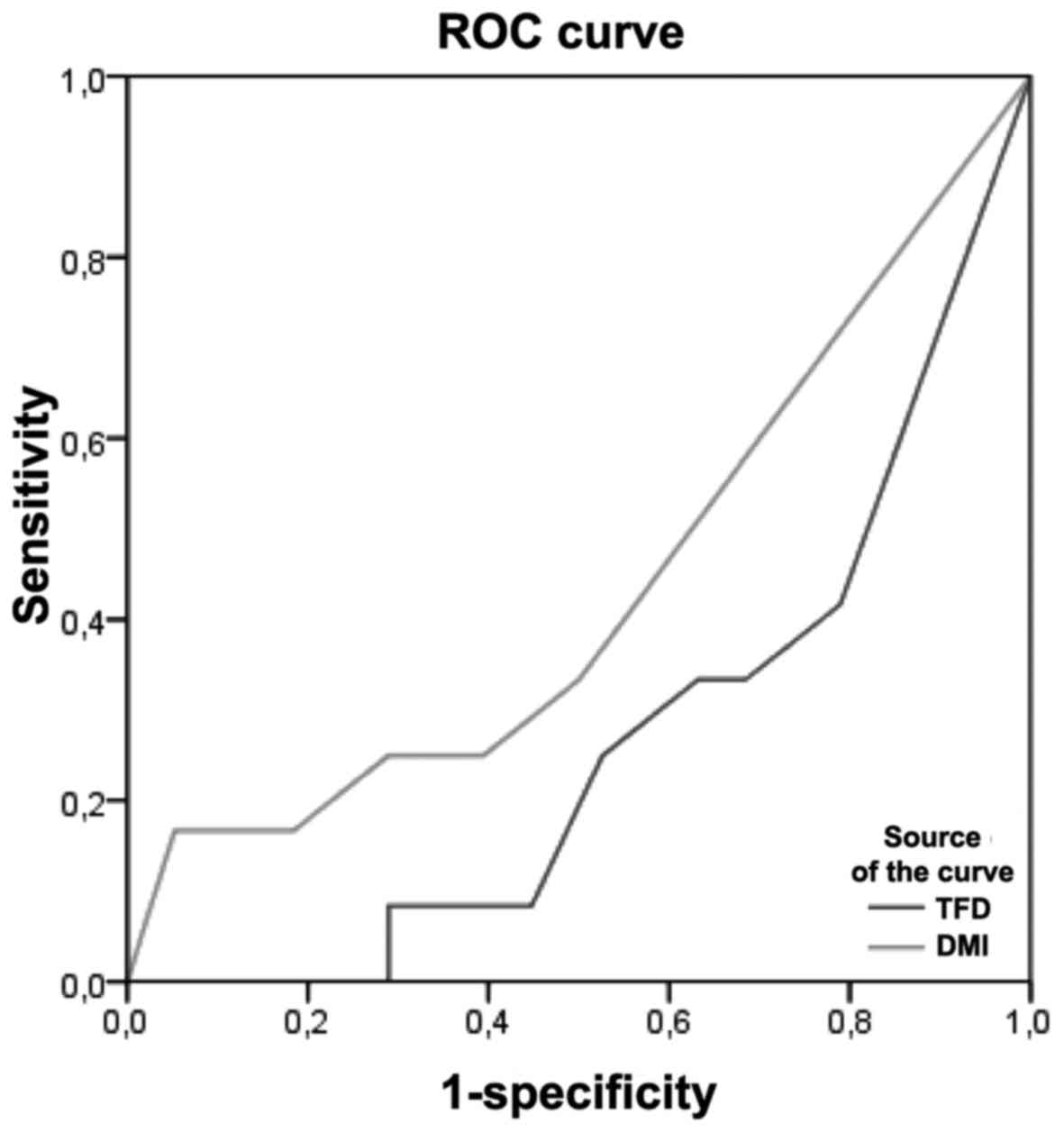|
1
|
Siegel RL, Miller KD and Jemal A: Cancer
statistics, 2016. CA Cancer J Clin. 66:7–30. 2016. View Article : Google Scholar : PubMed/NCBI
|
|
2
|
Amant F, Mirza MR, Koskas M and Creutzberg
CL: Cancer of the corpus uteri. Int J Gynaecol Obstet. 131 Suppl
2:S96–S104. 2015. View Article : Google Scholar : PubMed/NCBI
|
|
3
|
Vargas R, Rauh-Hain JA, Clemmer J, Clark
RM, Goodman A, Growdon WB, Schorge JO, Del Carmen MG, Horowitz NS
and Boruta DM II: Tumor size, depth of invasion and histologic
grade as prognostic factors of lymph node involvement in
endometrial cancer: A SEER analysis. Gynecol Oncol. 133:216–220.
2014. View Article : Google Scholar : PubMed/NCBI
|
|
4
|
Rahatli S, Dizdar O, Kucukoztas N, Oguz A,
Yalcin S, Ozen O, Reyhan NH, Tarhan C, Yildiz F, Dursun P, et al:
Good outcomes of patients with stage IB endometrial cancer with
surgery alone. Asian Pac J Cancer Prev. 15:3891–3893. 2014.
View Article : Google Scholar : PubMed/NCBI
|
|
5
|
ASTEC/EN.5 Study Group, . Blake P, Swart
AM, Orton J, Kitchener H, Whelan T, Lukka H, Eisenhauer E, Bacon M,
Tu D, et al: Adjuvant external beam radiotherapy in the treatment
of endometrial cancer (MRC ASTEC and NCIC CTG EN.5 randomised
trials): Pooled trial results, systematic review and meta-analysis.
Lancet. 373:137–146. 2009. View Article : Google Scholar : PubMed/NCBI
|
|
6
|
Kondalsamy-Chennakesavan S, van Vugt S,
Sanday K, Nicklin J, Land R, Perrin L, Crandon A and Obermair A:
Evaluation of tumor-free distance and depth of myometrial invasion
as prognostic factors for lymph node metastases in endometrial
cancer. Int J Gynecol Cancer. 20:1217–1221. 2010. View Article : Google Scholar : PubMed/NCBI
|
|
7
|
AJCC: AJCC Cancer Staging Manual. 6th
edition. Springer Verlag; New York: 2002
|
|
8
|
Zaino R, Carinelli SG, Ellenson LH, Eng C,
Katabuchi H, Konishi I, Lax S, et al: Tumours of the uterine
corpus: Epithelial tumours and precursorsWHO classification of
tumours of female reproductive organs. 6th edition. Carcangiu ML,
Herrington CS and Young RH: World Health Organization; Kurman, RJ:
pp. 126–132. 2014
|
|
9
|
Schwab KV, O'Malley DM, Fowler JM,
Copeland LJ and Cohn DE: Prospective evaluation of prognostic
significance of the tumor-free distance from uterine serosa in
surgically staged endometrial adenocarcinoma. Gynecol Oncol.
112:146–149. 2009. View Article : Google Scholar : PubMed/NCBI
|
|
10
|
Chattopadhyay S, Galaal KA, Patel A,
Fisher A, Nayar A, Cross P and Naik R: Tumour-free distance from
serosa is a better prognostic indicator than depth of invasion and
percentage myometrial invasion in endometrioid endometrial cancer.
BJOG. 119:1162–1170. 2012. View Article : Google Scholar : PubMed/NCBI
|
|
11
|
Geels YP, Pijnenborg JM, van den Berg-van
Erp SH, Snijders MP, Bulten J and Massuger LF: Absolute depth of
myometrial invasion in endometrial cancer is superior to the
currently used cut-off value of 50%. Gynecol Oncol. 129:285–291.
2013. View Article : Google Scholar : PubMed/NCBI
|
|
12
|
Lindauer J, Fowler JM, Manolitsas TP,
Copeland LJ, Eaton LA, Ramirez NC and Cohn DE: Is there a
prognostic difference between depth of myometrial invasion and the
tumor-free distance from the uterine serosa in endometrial cancer?
Gynecol Oncol. 91:547–551. 2003. View Article : Google Scholar : PubMed/NCBI
|
|
13
|
Lee KB, Ki KD, Lee JM, Lee JK, Kim JW, Cho
CH, Kim SM, Park SY, Jeong DH and Kim KT: The risk of lymph node
metastasis based on myometrial invasion and tumor grade in
endometrioid uterine cancers: A multicenter, retrospective Korean
study. Ann Surg Oncol. 16:2882–2887. 2009. View Article : Google Scholar : PubMed/NCBI
|
|
14
|
van der Putten LJ, van de Vijver K,
Bartosch C, Davidson B, Gatius S, Matias-Guiu X, McCluggage WG,
Toledo G, van der Wurff AA, Pijnenborg JM, et al: Reproducibility
of measurement of myometrial invasion in endometrial carcinoma.
Virchows Arch. 470:63–68. 2017. View Article : Google Scholar : PubMed/NCBI
|
|
15
|
Quick CM, May T, Horowitz NS and Nucci MR:
Low-grade, low-stage endometrioid endometrial adenocarcinoma: A
clinicopathologic analysis of 324 cases focusing on frequency and
pattern of myoinvasion. Int J Gynecol Pathol. 31:337–343. 2012.
View Article : Google Scholar : PubMed/NCBI
|
|
16
|
Ali A, Black D and Soslow RA: Difficulties
in assessing the depth of myometrial invasion in endometrial
carcinoma. Int J Gynecol Pathol. 26:115–123. 2007. View Article : Google Scholar : PubMed/NCBI
|















